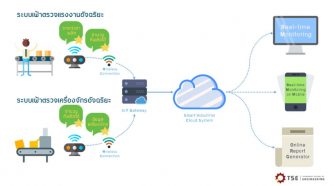Credit: Dreamstime
While high tech companies deliver high tech products and services externally, internally their organisation structure and ways of working are often unchanged
It’s a paradox that technology service providers are among the last companies going through digital transformation. The firms that gave us the technology to create the digital world are facing the need to transform themselves.
Services companies are making the transition to the new, creating new offerings and applying digital technology to the way they work with mixed success. Technology services and consulting companies fully embracing digital are benefiting. Others that cannot seem to let go of the past contribute to struggle.
The same applies to software companies with even more dramatic consequences. Every aspect of software technology industry has been disrupted by digital technology.
-
Customers are demanding more consumer and commercially friendly experiences from product use through post sales, upgrades, etc.
-
Business models are moving collecting license and maintenance revenues to generating demand for cloud delivered services.
-
Technology delivery vehicles and architecture futures are cloud first and increasingly cloud only.
-
Revenue models are changing from periodic upgrades to continuous new and improved service
-
Buying and consumption models are changing from corporate purchasing and RFP’s to technical teams and self-provisioning
-
The amplitude and frequency of change is growing fracturing organisations and their functions.
-
Disruption from more digital pure plays is real and rapidly occurring.
These are all points that any retail, financial services, manufacturing or other executives have heard for years. Now it’s technology’s turn.
 Credit: Gartner
Credit: GartnerTech firms embody the messages related to digital, yet they too often keep the structures and practices associated with the pre-digital age
It’s technology’s turn for transformation
Technology companies know the world is changing. They understand the technology dimension of these changes and the potential of new technologies. They talk at great length about their products and how they provide a path for artificial intelligence, machine learning, etc. Their aspirations, roadmaps and investments. The embody the messages related to digital, yet they too often keep the structures and practices associated with the pre-digital age.
They just do not get ‘it’ in the same way that we said incumbent retails, banks, etc. did not get it. The “IT” is the essential truths of digital. Here are some ways for you if you need to move beyond a superficial transformation to digital:
Are you customer deaf and blind?
Technology companies always have something to say so they will never be ‘dumb’ in that sense, but you know need to transform when:
-
Your messaging tells the market what they should value, rather than really listening to what customers care about. If your market messaging is missing its mark, then chances are you are customer deaf.
-
You are concentrating on company revenue ahead of customer value and context. Seeing your value as self-evident is a definition of being both customer blind. “Our customers should know that this is better,” should set off alarm bells in the company.
-
You look down on customers, particularly the ones who have made the greatest investment. If they only understood you, then they would see your value.
Are you living in a data distorted reality?
Technology firms are awash in data and metrics which is great. Too many cannot see that data for what it is, rather they fight to have the data fit their view of the world.
-
You discount data and information that runs counter to your beliefs and strategies about the market. If the data does not make sense to you, then consider that something has changed.
-
You nitpick analysis and fail to see the trend. No data is perfect, and all data has problems. Picking apart the information as a means of tearing down its credibility leads you to miss the message and trend. In most cases, adjusting for your nit, does not change the nature of what the data is saying.
-
You avoid data, particularly data from outside the organisation. We know the market better because we are in the market, is a common excuse. Remember every company has a 100 per cent market share of customers who buy their product. The share that counts is everyone else, who you cannot see because you are looking at your feet.
-
Comparing yourself to the past rather than the market. This is the Year of Year rather than Year over Peers myopia that accelerates people down disruption road. Follow the link for more.
Are you organised to sell based on the past?
Your sales force is compartmentalised with duplicative overlays for solutions, industry, geography or other divisional concepts. This hangs people up, creates internal competition and unnecessary complexity.
-
You have vertically oriented teams, with hefty hand-offs and fragmented accountabilities.
-
You have to go too far up the leadership chain for decision to stick. This leads people not to bother advocating for the customer. When they do bother, then they are branded negatively by peers.
-
You need permission to talk to a customer or prospect, then you are too compartmentalised.
-
The customer does not have a single throat to choke who has operational responsibility – to make change happen.
-
Corporate can override a pending sales deals, because it does not fit their view of the business which they did not communicate clearly.
Are you organised in an old model?
While high tech companies deliver high tech products and services externally, internally their organisation structure and ways of working are often unchanged.
-
Your resources are budgeted in fragments, each gets a little all in the name of strategy.
-
Your organisation’s chart divides people up in ways that require customers or customer service to navigate you company to get their answers.
-
There is limited transparency and data is used as ammunition in internal resource, responsibility or accountability discussions.
-
You feel the seams in your company and see things being harder than necessary
These are factors that indicate the need for real digital transformation within technology product and service companies. There are probably others, but it’s a start.
Technology companies, particularly large established ones, retain much of their pre-digital structure, strategy and operations. They need digital transformation from the inside-out. When that happens the first shall be the last to make the change.
Mark P McDonald is a vice president and fellow emeritus in Gartner for General Managers Programme.
 Credit: Dreamstime
Credit: DreamstimeSign up for CIO newsletters for regular updates on CIO news, career tips, views and events. Follow CIO New Zealand on Twitter:@cio_nz
















Commentary: Why are investors looking at supply chain technologies in 2020?